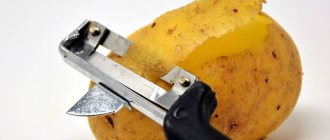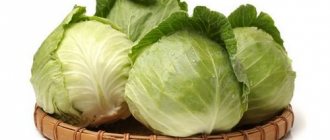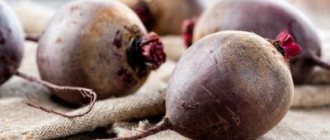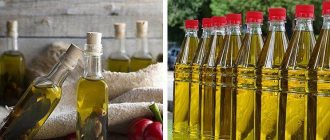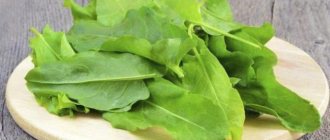Everyone who grows their own harvest of vegetables, berries and fruits is well aware of the task of preserving some part of it in some form for future use, in order to replenish their menu with environmentally friendly plant products grown with love and care during the autumn-winter season. Such products also become a good support for the family budget. Although nowadays you can buy both fresh and frozen plant products all year round, summer residents know the special taste of their gardening gifts.
Storing green products requires certain experience, knowledge, optimal conditions, and advice from people knowledgeable in this matter, which we will talk about in this article. For proper storage of any food, the onslaught of four so-called enemies should be excluded: bacteria, fungi, yeast and enzymes. In the line of attack against them we put cold, heat treatment, salting and fermentation, dehydration in its natural form or by preparing candied fruits. Recently, vacuum canning methods have begun to be used.
The storage process is further complicated by the individual approach to various products. For example, the large cabbage family. Broccoli is stored in a damp and cold environment for no longer than a week, and Kale in the soil until the next harvest; cabbage varieties are good in stock when fermented. When cut, white cabbage can be stored in the freezer. Leeks store well in the freezer in shredded form and are included in cooking without defrosting. And if climatic conditions allow and there is no risk that it will be stolen, then it is perfectly stored until the end of April right in the garden bed in which it grew. To store root vegetables, you need cool and somewhat humid rooms or containers. Carrots and root celery, grated on a coarse grater in appropriate containers, can be stored in a freezer with a quick freezing mode.
- Storing food in the refrigerator and freezer
- Optimal storage conditions for plant products
- How to store eggs
- Storage of fermented milk products
- Side dishes and bakery products
- Terms and rules for storing food in the freezer
- Food canning
- Drying food products
- Salting food
We remind you that storing apples and potatoes in the same container or in the same room is not recommended for the reason that ethylene gas emanating from ripened apples will worsen the storage conditions of potatoes.
In the modern practice of canning food for future use, a really good method of hot filling products in glass containers with hard or screw caps, which goes in parallel with old-fashioned canning, is becoming relevant. Its advantages are that it saves time and energy on heating and cooling devices. The main thing with such processing, mainly of vegetables and fruits, is that their nutritional and vitamin value is preserved.
With all the variety of ways to safely store healthy food products, you need to be most concerned about their subsequent safe and beneficial use. Let us dwell on the most common and optimal methods of such storage available in everyday practice. Let's start with the cold methods.
Storing food in the refrigerator and freezer
All products are stored in the refrigerator for a strictly defined time, allotted for fresh plant products; baked, smoked and boiled meat products; for dairy products, for fish, which everyone has known about for a long time. Such storage should be short-term, using containers that can isolate odors so that the products retain freshness and their own aroma, and also protect them from drying out - staleness, which will reduce the quality and appearance of the stored products even in a short time.
For longer and safer storage, quick freezers should be used. Modern freezers are equipped with information about the level at which various types of food to be frozen for long-term storage should be stored. Usually the pictures on the door panel provide the necessary information.
The freezer is the best household appliance invented by our civilization. 18-degree freezing allows you to store any food for a long, but not unlimited time. For optimal effect, you should follow the correct storage mode, which we decided to talk about in this article.
The basic rule for storing almost all products in a freezer or freezer is sealed packaging in special bags or containers that are marked for use for storing food at 18 cold degrees. Ordinary plastic food bags can only be used for short-term storage, otherwise they can burst and crumble.
Products with strong odors need increased insulation to ensure that others retain their own aroma. Filled containers must be placed at a certain interval for free circulation of cold air. It is appropriate to label stored containers with notes indicating their shelf life. Frozen greens and round berries should also be labeled so as not to confuse grapes with currants, raspberries with blackberries, and the like.
The packaging process itself requires that it be compact and tightly filled inside it. Eliminate air from it as much as possible so that the freezing process goes faster and the product is stored efficiently for the required time.
In addition, it is better to distribute food in suitable packaging into portions that can be completely used after defrosting.
Optimal storage conditions for plant products
We will talk about juicy fruits, vegetables and berries, for example, watermelon, melon, papaya, strawberries, zucchini, eggplant, which can, firstly, crack due to exposure to low temperatures; secondly, when defrosting, they lose taste, aroma and visual appeal.
A whole range of vegetables, berries and fruits cannot be frozen at all as a means of storage, because due to their natural juiciness they lose their natural taste, aroma and nutritional appeal. These include cabbage, cucumbers, celery, lettuce, tomatoes, parsnips, radishes, radishes and chicory; in no case - potatoes, which, like all raw root vegetables, will become sweet, limp and watery after defrosting.
But no one has canceled cold storage of fresh plant products, because, firstly, they can be stored at low warm degrees in a cellar or refrigerator. Secondly, in order to keep such juicy fruits or berries as peaches, strawberries, kiwis and others relatively fresh, you must first place them in a suitable dry and clean airtight jar, add 1 tablespoon of granulated sugar per cup, In a cold place, wait until the syrup has drained, close with a hermetically sealed lid, and shake for even distribution. In this way, you can store your favorite fruits in a cool place for up to 9 months. And in special containers, sweetened fruits and berries can even be frozen - after defrosting, they can be consumed as a full-fledged dessert.
Less juicy and denser fruits: washed and dried apples, quinces, pears - it is better to core them, cut into large slices, place in a clean and dry jar, sprinkle them with the juice of one fresh lemon, sprinkle with granulated sugar to taste, 1-2 tablespoons , pour a little cold boiling water, shake everything, close with a tight lid. In this way, you can store dense fruits in the refrigerator for a long time.
Rules and methods of storage
Warm clothing made from natural materials must be kept in a dry, dark and relatively cool place . Down jackets, leather coats and jackets, sheepskin coats and other natural items must be thoroughly cleaned at the end of the season. If possible, it is better to have them dry cleaned or wash them yourself, following the rules for caring for a particular material. During storage, contaminants not only penetrate deeply, but also destroy the structure of the product.
It is advisable to keep down jackets in closets, hanging them on hangers . Whenever possible, fabric covers or similar packaging should be used. If there is none, the product can be turned out and placed in a ventilated box.
Fur products are first wiped with a damp sponge , then manually leveled to remove wrinkles. The sheepskin coat needs to be turned out and the fur thoroughly cleaned with a brush. Before storing, you need to turn it back right side out.
In cloth packaging
Down jackets are best wrapped in fabric bags. Such packaging allows air to pass through, but protects from dust, light and pests . Expensive winter clothes are often sold with special storage cases. The product must be placed in packaging only in its pure form.
It is advisable to use a cover covering the entire length of the product . This will allow you to hang it on hangers. It is better to store things in a suspended state on the far hangers of the closet. In this position, their shape is guaranteed not to deteriorate.
If there is no space in the closet, things need to be packed in breathable bags , then put in cardboard boxes , and sent to a storage location, for example, in a pantry or on the mezzanine. Boxes must have holes for ventilation, this is especially important for down, fur and other natural materials. Synthetics can also be located in a poorly ventilated place.
In vacuum bags
A vacuum bag is a plastic product from which, after packaging, air is pumped out using a special hand pump or compressor. The advantage of the method is significant space savings . Compression by pumping out air allows you to reduce the size of a thing by 50-80%, depending on the material. A good solution for small apartments.
But, down jackets cannot be stored in vacuum bags. Down and feathers, which are natural fillers, can become deformed due to compression. Because of this, the item usually becomes completely unusable, since the filler cakes in some places and is completely absent in others. It is usually impossible to restore such a jacket. But, down jackets can be rolled up without pressure and placed in fabric bags.
Synthetic items can be packed in vacuum bags. Materials such as padding polyester, holofiber and the like are not afraid of compression, and quickly restore their shape even after lying tightly for a long time. Down jackets made from synthetic down (synthetic non-woven fiber insulation) can also be kept in a vacuum without restrictions.
On separate hangers
The best solution for any materials is to place them on separate hangers. A particularly convenient option for jackets with padding polyester . These are the most undemanding products in terms of care and storage. They can be placed close together even without covers, which is convenient if you have a small closet. The main thing is to place each jacket on a separate hanger.
Synthetic winterizer items can also be placed in vacuum bags. But housewives do not recommend completely pumping the air out of them. This sometimes leads to the formation of folds that take a long time to level out. It's better to lower them halfway.
On the balcony and loggia
In a small apartment without a separate closet for winter clothes, you can use a balcony. It is enough to meet 2 requirements:
- Moisture protection.
- Prevents UV exposure.
To protect things from excess humidity, which may appear due to condensation, you need to regularly ventilate the room . It’s even easier to protect yourself from ultraviolet radiation - just pack your things in dark bags . It is extremely important that the balcony is glazed and insulated . While synthetic products can be stored for a relatively long time at sub-zero temperatures, natural down can deteriorate if left in the cold for a long time.
In plastic containers
Home improvement stores often sell plastic containers of various sizes for clothing. This is a fairly convenient and durable container for storing things. They even allow you to lightly tamp down your clothes.
But such containers have one important drawback - low air permeability . Accordingly, fur, wool and down jackets cannot be stored in them due to the lack of ventilation. This can be corrected by making several holes on different sides of the container. This can be done with a screwdriver or a heated awl. For synthetics, such modernization is not necessary.
Storage of fermented milk products
Kefir, fermented baked milk, yogurt, and cheese lose their taste and even beneficial qualities when frozen. Low temperatures can even cause fermented milk products to curdle, thereby losing their nutritional appeal. And such dairy delicacies as custard, yoghurt sauces, cream, when stored at sub-zero temperatures, simply separate, become watery and lumpy, and can simply be thrown away.
Side dishes and bakery products
Cooked pasta and rice lose both flavor and texture when frozen. But ready-made pearl barley porridge tolerates very well even long-term storage. It is enough to package it in small portions - and at any moment you will receive a wonderfully healthy side dish that will “make your heart smile”, because pearl barley porridge does not lose anything under the influence of sub-zero temperatures.
A good and healthy way to store bread and rolls in the refrigerator is in a plastic bag with a piece of paper towel inside to absorb excess condensation so that the product does not become moldy. This will allow the bread to become moderately stale and not lose its beneficial and flavorful properties; moreover, it can be cut into thin slices - economically and usefully.
Bread
It is recommended to store bread in a plastic bag only if it is in the refrigerator. In other cases, heat and closed space will contribute to the development of harmful microflora.
A clay bread box is best suited for storing bread, in which the product “breathes”, does not dry out, and remains fragrant and tasty for a long time. In second place are wooden bread bins and containers made of wicker, followed by the more common metal and plastic bread bins.
You cannot place the bread bin on the refrigerator: the condensation released by the appliance unit causes the bread to quickly spoil. It is better to store wheat and rye bread in different places.
Terms and rules for storing food in the freezer
By reading the instructions for the correct use of the refrigerator and freezer, you will learn about the permissible shelf life of various types of products in them. An indicative example is the storage of fatty varieties of fish, which after 2-3 months of exposure, even in the cold, sharply loses its taste.
These terms are quite specific and limited by time and benefit. As mentioned above, all packages or containers should be clearly labeled with the name of the product and the date it was added to avoid unwrapping and save time and cold.
Acceptable shelf life of food in the refrigerator and freezer:
- poultry - 9 months;
- beef, pork, lamb, horse meat - 4-6 months;
- oily fish - 2-3 months, and other types of fish - 6 months;
- seafood - 3-4 months;
- semi-finished products: dumplings, dumplings, pancakes, cabbage rolls, meat cutlets and minced meat - 3-4 months;
- ready-made dishes, as well as: broths, soups, cutlets, sauces - 2-3 months;
- vegetables and fruits - up to 1 year, except tomatoes - 2 months; sweet pepper - 3-4 months; zucchini and pumpkin - 10 months, apples - 4 months: apricots - 6 months; peaches - 4 months; apples - 0.5 years; fresh herbs - 6-8 months; berries - 0.5 years;
- boiled mushrooms - 1 year; raw - 8 months;
- ice cream - 2 months;
- butter and margarine - 9 months;
- Bread and bakery products - 2-3 months
How to choose a place in the refrigerator
The entire interior space of the refrigerator is divided into compartments for a reason. Each compartment is constantly maintained at a certain temperature, so you should be more careful when sorting your purchases. What and where should I put it?
- The upper compartments are suitable for ready-made dishes, fruit and vegetable salads.
- The second shelf is a place for cheese curds, sausages, salads with meat or fish.
- On the third shelf, almost at the bottom, you can place fish or chilled meat, seafood, dairy and other goods that have a limited shelf life.
- Place fruits, vegetables, and herbs in drawers that can be pulled out.
- Place sauces, juice, eggs, alcohol or water in the doors.
Food canning
Nowadays, with the wide availability of all kinds of glass containers and hard packaging, vacuum and soft lids, it has become one of the most popular ways to store food for long-term storage by preserving it: pickling, pickling, pickling and hot packaging. Housewives subject vegetables, fruits, berries, mushrooms and even meat products to this treatment. All this happens either using vinegar or sugar, or by hot packing in sterile containers. An indispensable condition for the safety and taste of pickled products is the balance of vinegar and sugar, which can be found in many already tested and popular recipes.
If sterility is maintained and the products are impeccably sealed, this makes it possible to store them for quite a long time, but not more than 1 year. Longer periods worsen the taste of the product and increase the risk of botulism, and with the content of fruit seeds lead to the accumulation of hydrocyanic acid. If you have a lot of home-canned food, be sure to mark the date of preservation directly on the lid with adhesive tape.
The “sealing” remaining after the expiration date should be mercilessly disposed of without exposing anyone to the danger of poisoning.
Drying food products
The basis of any drying process is dehydration of the product. The maximum absence of moisture in the dried product deprives the bacteria of fermentation and rotting of their necessary environment. All that remains is to properly dry the stored products and store them correctly.
Types of drying:
- air drying - most cereals and legumes, herbal teas (peppermint, rosemary, basil of varying aroma) are dried in the shade and in a ventilated place; herbs for seasoning (thyme, sage, dill, parsley and others). The technology is quite simple: collect in bunches, hang in the shade and in the air, and then store in fabric bags or containers for dried herbs;
- in a drying oven by dehydration at a certain low temperature - up to +30 C, so that dried fruits or vegetables retain as much of their natural nutritional and taste value as possible;
- smoking in a special device by drying and smoking meat, fish and seafood.
Vegetables and fruits
Ideally, most fruits and vegetables should be placed separately in paper containers. Plastic bags are also acceptable, but care must be taken to ensure that the fruit placed in them is dry.
Tomatoes can be stored in enamel containers on the bottom shelf of the refrigerator. Potatoes, beets, carrots, cabbage are well preserved in containers at the bottom of the refrigerator. Peeled garlic cloves can be placed in a glass jar and filled with vegetable oil. The jar must be tightly closed and placed on the top shelf of the refrigerator. This way you will not only preserve the garlic for a long time, but also get aromatic garlic oil for dressing. Cooked vegetables for salad are best stored unpeeled.
Place leafy vegetables and herbs in a dry, tightly closed container. Dill, parsley and green onions, wrapped in a damp cloth and placed in a container with holes, can be stored for up to two weeks on the bottom shelf of the refrigerator. Rhubarb is stored in the refrigerator, wrapped in paper.
Many fruits do not necessarily need to be placed in the refrigerator, especially tropical fruits: bananas and pineapples. They are best stored at room temperature. Fresh berries should be left in containers on the middle shelf of the refrigerator.
Salting food
Preserving food with salt is the oldest of these methods, which humanity has come to since time immemorial. And to this day it remains quite relevant for storing meat, poultry, seafood and fish. In my house they especially love delicious salted lard. The main preservative element of the salting (hardening) process is table salt, which creates an insurmountable barrier for microorganisms when the water concentration decreases, keeping food suitable and tasty for eating for a long time. The amount of excess salt that is inevitable during curing can be controlled by soaking the product for consumption.
Foods preserved by curing are not easy to prepare. Recipes for such preservation can be found on the Internet. They can be magically complex, for example, when making basturma and expensive varieties of raw smoked sausage. Or quite simple - salt a little and keep raw meat for a short period of time.
There is another popular way to preserve food - vacuum packaging - this form of storing food for future use is still developing in our time, and the difficulties of its implementation are associated with the availability of the necessary containers, lids, and sometimes trust and experience. The essence of this process is to eliminate as much as possible the presence of air in the container used (bag, container, bottle) in order to create a hermetic environment in which products should be stored out of contact with microorganisms.


